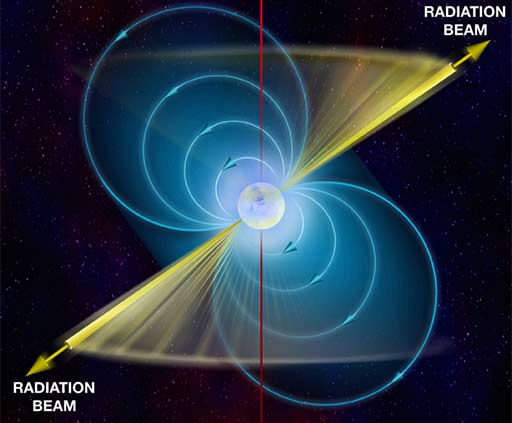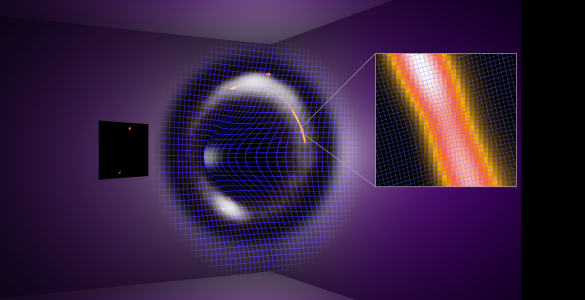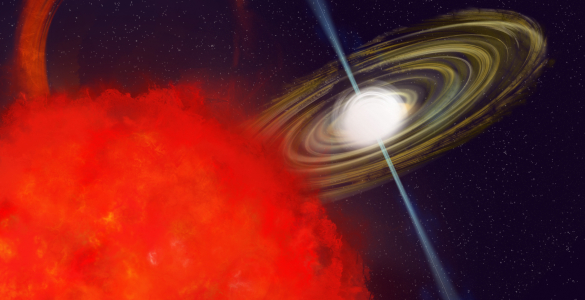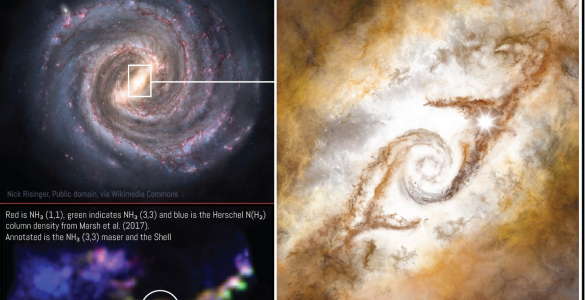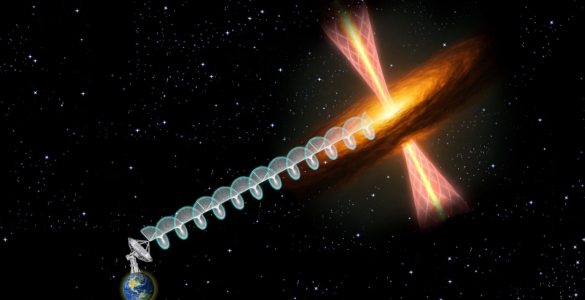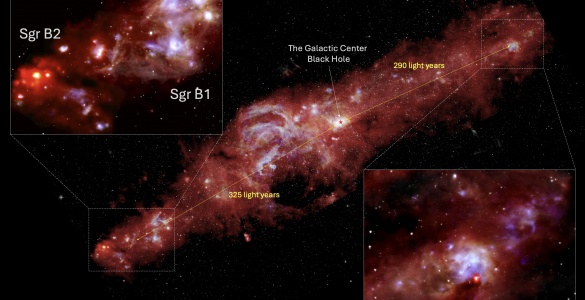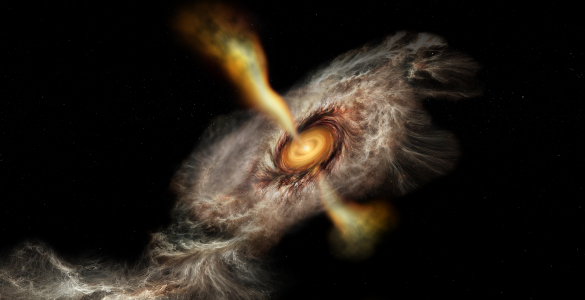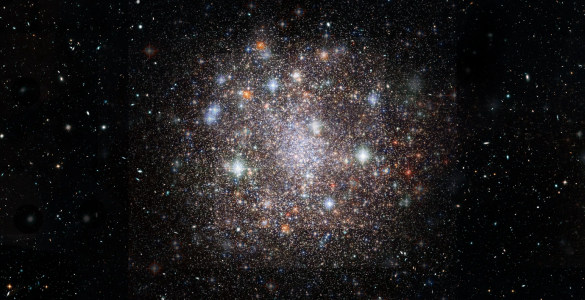Astronomers using the National Science Foundation’s Robert C. Byrd Green Bank Telescope have discovered the fastest-spinning neutron star ever found, a 20-mile-diameter superdense pulsar whirling faster than the blades of a kitchen blender. Their work yields important new information about the nature of one of the most exotic forms of matter known in the Universe.
“We believe that the matter in neutron stars is denser than an atomic nucleus, but it is unclear by how much. Our observations of such a rapidly rotating star set a hard upper limit on its size, and hence on how dense the star can be.,” said Jason Hessels, a graduate student at McGill University in Montreal. Hessels and his colleagues presented their findings to the American Astronomical Society’s meeting in Washington, DC.
Pulsars are spinning neutron stars that sling “lighthouse beams” of radio waves or light around as they spin. A neutron star is what is left after a massive star explodes at the end of its “normal” life. With no nuclear fuel left to produce energy to offset the stellar remnant’s weight, its material is compressed to extreme densities. The pressure squeezes together most of its protons and electrons to form neutrons; hence, the name “neutron star.”
“Neutron stars are incredible laboratories for learning about the physics of the fundamental particles of nature, and this pulsar has given us an important new limit,” explained Scott Ransom, an astronomer at the National Radio Astronomy Observatory and one of Hessels’ collaborators on this work.
The scientists discovered the pulsar, named PSR J1748-2446ad, in a globular cluster of stars called Terzan 5, located some 28,000 light-years from Earth in the constellation Sagittarius. The newly-discovered pulsar is spinning 716 times per second, or at 716 Hertz (Hz), readily beating the previous record of 642 Hz from a pulsar discovered in 1982. For reference, the fastest speeds of common kitchen blenders are 250-500 Hz.
The scientists say the object’s fast rotation speed means that it cannot be any larger than about 20 miles across. According to Hessels, “If it were any larger, material from the surface would be flung into orbit around the star.” The scientists’ calculation assumed that the neutron star contains less than two times the mass of the Sun, an assumption that is consistent with the masses of all known neutron stars.
The spinning pulsar has a companion star that orbits it once every 26 hours. The companion passes in front of the pulsar, eclipsing the pulsar about 40 percent of the time. The long eclipse period, probably due to bloating of the companion, makes it difficult for the astronomers to learn details of the orbital configuration that would allow them to precisely measure the masses of the pulsar and its companion.
“If we could pin down these masses more precisely, we could then get a better limit on the size of the pulsar. That, in turn, would then give us a better figure for the true density inside the neutron star,” explained Ingrid Stairs, an assistant professor at the University of British Columbia and another collaborator on the work.
Competing theoretical models for the types and distributions of elementary particles inside neutron stars make widely different predictions about the pressure and density of such an object.
“We want observational data that shows which models fit the reality of nature,” Hessels said.
If the scientists can’t use PSR J1748-2446ad to do that, they are hopeful some of its near neighbors will yield the data they seek. Using the GBT, the astronomers so far have found 30 new fast “millisecond pulsars” in the cluster Terzan 5, making 33 pulsars known in the cluster in total. This is the largest number of such pulsars ever found in a single globular cluster.
Dense globular clusters of stars are excellent places to find fast-rotating millisecond pulsars. Giant stars explode as supernovae and leave rotating pulsars which gradually slow down. However, if a pulsar has a companion star from which it can draw material, that incoming material imparts its spin, or angular momentum, to the pulsar. As a result, the pulsar spins faster. “In a dense cluster, interactions between the stars will create more binary pairs that can yield more fast-rotating pulsars,” Ransom said.
The great sensitivity of the giant, 100-meter diameter GBT, along with a special signal processor, called the Pulsar Spigot, made possible the discovery of so many millisecond pulsars in Terzan 5. “We think there are many more pulsars to be found in Terzan 5 and other clusters, and given that the fast ones are often hidden by eclipses, some of them may be spinning even faster than this new one,” Ransom said.
“We’re excited about using this outstanding new telescope to answer some important questions about fundamental physics,” he said.
In addition to Hessels, Ransom and Stairs, the research team includes Paulo Freire of Arecibo Observatory in Puerto Rico, Victoria Kaspi, of McGill University, and Fernando Camilo, of Columbia University. Their report is being published in Science Express, the online version of the journal Science.
The National Radio Astronomy Observatory is a facility of the National Science Foundation, operated under cooperative agreement by Associated Universities, Inc. The pulsar research also was supported by the Canada Foundation for Innovation, the Natural Sciences and Engineering Research Council of Canada, the Quebec Foundation for Research on Nature and Technology, the Canadian Institute for Advanced Research, the Canada Research Chairs Program, and the National Science Foundation.
Contact:
Dave Finley, Public Information Officer
Socorro, NM
(505) 835-7302
dfinley@nrao.edu






